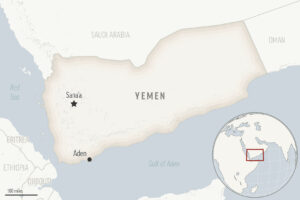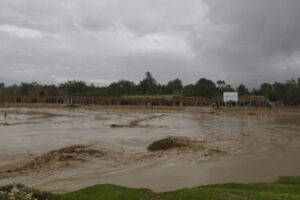Tokyo, 17 February, /AJMEDIA/
In a startling discovery, scientists aboard the exploration submarine The Limiting Factor have stumbled upon a discarded beer bottle at the deepest point of the ocean, the Mariana Trench. Located 11 kilometres down at the bottom of the Challenger Deep point, this finding underscores the pervasive reach of human impact on even the most remote corners of the planet, according to news18.com.
The sighting of the beer bottle comes in the wake of an old research revealing alarming levels of pollution in the Mariana Trench. A report by The Guardian highlighted the presence of “extraordinary” levels of toxic pollutants in this deep-sea abyss, challenging the perception of the deep ocean as a pristine sanctuary untouched by human activity.
Alan Jamieson of Newcastle University, who led the research, expressed his dismay at the findings, stating, “We still think of the deep ocean as being this remote and pristine realm, safe from human impact, but our research shows that, sadly, this could not be further from the truth.” The fact that pollutants have been found at great depths illustrates the significant and lasting influence of human actions on the environment.
Jamieson further explained to the news outlet that the deepest parts of the ocean, like the Mariana Trench, are inhabited by highly efficient scavengers such as amphipods, which consume any organic material that descends to the ocean floor. Consequently, pollutants find their way into the food chain, posing significant threats to marine life.
While the presence of pollutants in the Mariana Trench wasn’t entirely unexpected due to the accumulation of pollutants over time, the exceptionally high levels found in the sampled organisms have raised concerns among scientists.
The Mariana Trench, located in the western Pacific Ocean to the east of the Mariana Islands, holds the distinction of being the deepest part of the world’s oceans. Its extreme conditions, including immense pressure, darkness and cold temperatures, make it an inhospitable environment for most life forms. However, despite these challenges, the trench is home to a variety of organisms adapted to its harsh conditions.
Formed by the process of subduction, where the Pacific Plate is being forced beneath the Mariana Plate, the trench has been a subject of fascination and exploration since its discovery during the Challenger Expedition in the 1870s.
Measurements in the Mariana Trench reveal depths surpassing 6.5 miles (or 36,000 feet) at Challenger Deep. In contrast, the average ocean depth is about 12,000 feet (or 2.3 miles). However, the ocean floor, much like land, is diverse, featuring towering peaks, deep valleys and other dynamic terrain.
Many areas, including Challenger Deep, plunge even deeper into the abyss. These regions, descending beyond approximately 3.5 miles (or 20,000 feet), are termed the hadal zone, named after the Greek god of the underworld, Hades.









































